In pictures: Leftfield's live setup
Neil Barnes and Adam Wren talk tech, their live show and latest album

Intro
Leftfield have been a musical feature of this particular hack’s life for more years than he cares to (or can even) remember. From the consciousness expanding, life-affirming beats and bass of 1995’s debut, Leftism, through to 1999’s dubbed up rhythm-fest, Rhythm & Stealth, Leftfield’s Neil Barnes and Paul Daley blazed a trail that many in the dance music fraternity were simply left to follow.
In the intervening 16 years (that’s 16 long years) many of us had almost given up hope of adding to our Leftfield collection; until, that is, the glitchy, stuttering intro of the brilliant Universal Everything heralded Leftfield’s return, with the equally brilliant new album, Alternative Light Source, following close on its electronic heels.
With Paul Daley having stepped down to follow a solo path, Leftfield is now essentially Neil Barnes’ project ably assisted by long-time engineer/ programmer Adam Wren. The pair are augmented for live shows by the drumming skills of Nick Rice along with a floating palette of live vocalists, as has always been a feature of Leftfield’s live outings.
Alternative Light Source is a triumphant return for Leftfield with its leaner, club-honed beats and some wonderful vocal contributions from the likes of TV On The Radio’s Tunde Adebimpe (on blistering album-opener, Bad Radio), Poliça’s Channy Leaneagh (Bilocation) or the righteously indignant street-poetry of Head And Shoulders, which features the unmistakable vocals of Sleaford Mods’ Jason Williamson.
We hooked up with Neil Barnes and Adam Wren post-soundcheck prior to their incendiary London Roundhouse show where we are regaled with tales of dust falling from the venue’s roof onto their equipment due to the, shall we say, serious nature of the bass-bins Leftfield use. With that in mind, we set out to ascertain just how they bring the complex electronic layers and rolling roster of vocals of Alternative Light Source out into the wider world. Neil kindly gave us the lowdown on the intricacies of taking Leftfield out on the road…
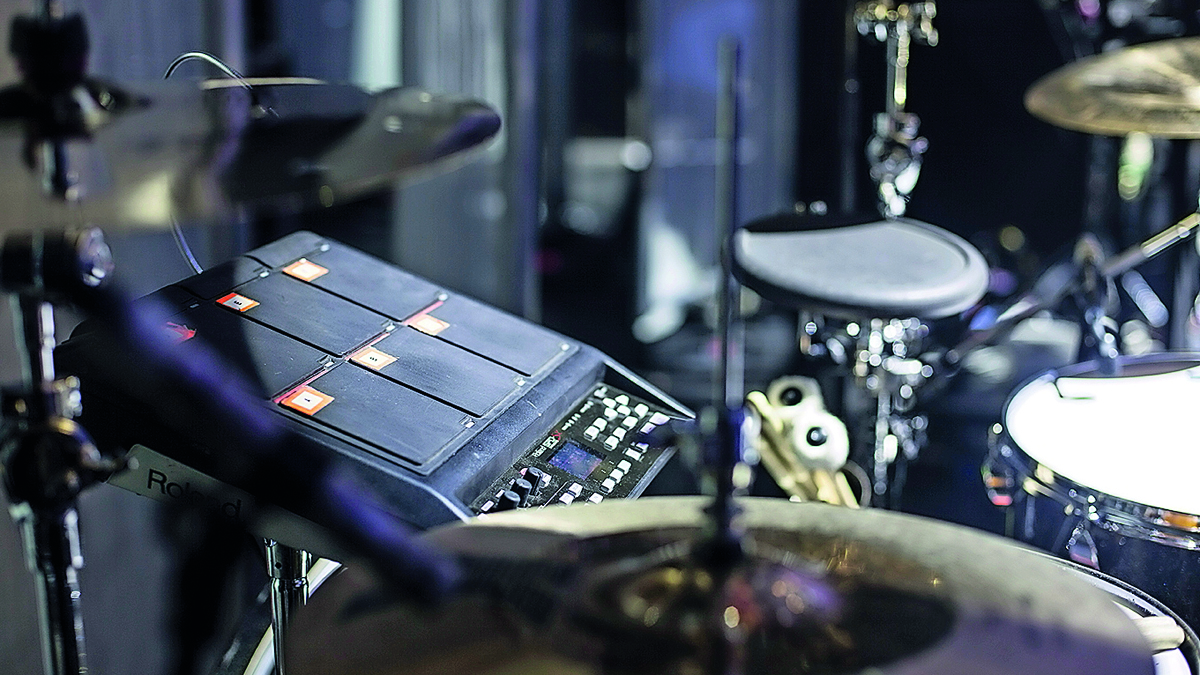
All triggered
Can you talk us through the finer points of this current Leftfield live rig?
“Well, there’s three of us up there. Nick Rice on a complicated set-up of drums and triggers. He’s triggering samples from two Roland SPD-SXs, which are full of samples from the records.
“There are no live sounds coming off the drums really as they’re all triggered sounds. There’s one live snare and a tom for a couple of sections but the rest is all triggered. There are crashes and ride cymbals for certain tracks and Nick does a lot of filtering and effects himself on the fly. He’s full on! As we’ve gone along we’ve added more and more of the sounds from the album into his kit so he’s got tons to do!”
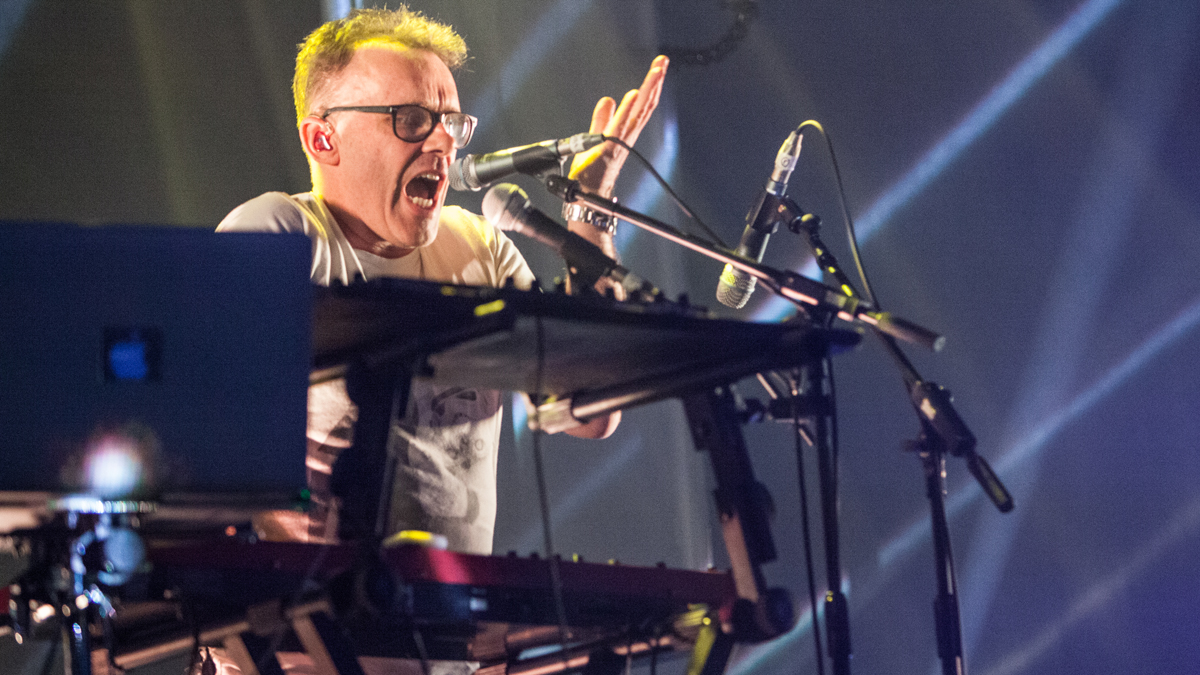
Individual setups
Having such a creative drummer live must make it more fun than just running beats?
“Oh yeah... and he’s really quick and he’s got incredible timing so that’s fantastic. We have Track basically where we put things like solid basses and robotic kick drum sounds, which Nick then plays around with.”
What about the set-up that Adam is using?
“[laughs] I don’t really know where to begin as Adam’s set-up is so complicated! Adam does lots of things. First, he’s got a desk up onstage so he takes sounds that we all make and manipulates them live. He also takes stuff off track as well and plays that as well as putting effects on the vocalists.
“He’s got the Sherman Filterbank we used on a lot of the older Leftfield album tracks and he plays keyboards too so he’s really busy.”
And your own set-up?
“I play a lot of lead-lines and I’ve got my laptop with a ton of samples and keyboard sounds from the record so I can play them live. I’m using three keyboards... it’s the mobile part of the studio you might say.
“A lot of the stuff used to make Alternative Live Source isn’t with us; like my Rhodes Chroma Polaris, which is beautiful but it’s too old and too heavy to take out with us. I have taken it out in the past. I’ve got a Waldorf Wave that was used a lot on the new album, an ARP Odyssey and a few other bits and pieces that are left in the studio so we can trim things down for live. So, one of my keyboards just plays samples and basslines.
“I’ve got a Korg Wavedrum for triggering percussive stuff and two dedicated keyboards, the Dave Smith Mopho and a Nord Wave. The Nord Wave is an interesting keyboard as you can put samples into it, which makes it different. So, you have the synth-type side of it but we often put vocals or things through it on the fly and add effects and filters. It’s a really creative system that can go in lots of different directions while we’re playing. There is Track so we’re stuck to that but within that what we can do is quite broad.”
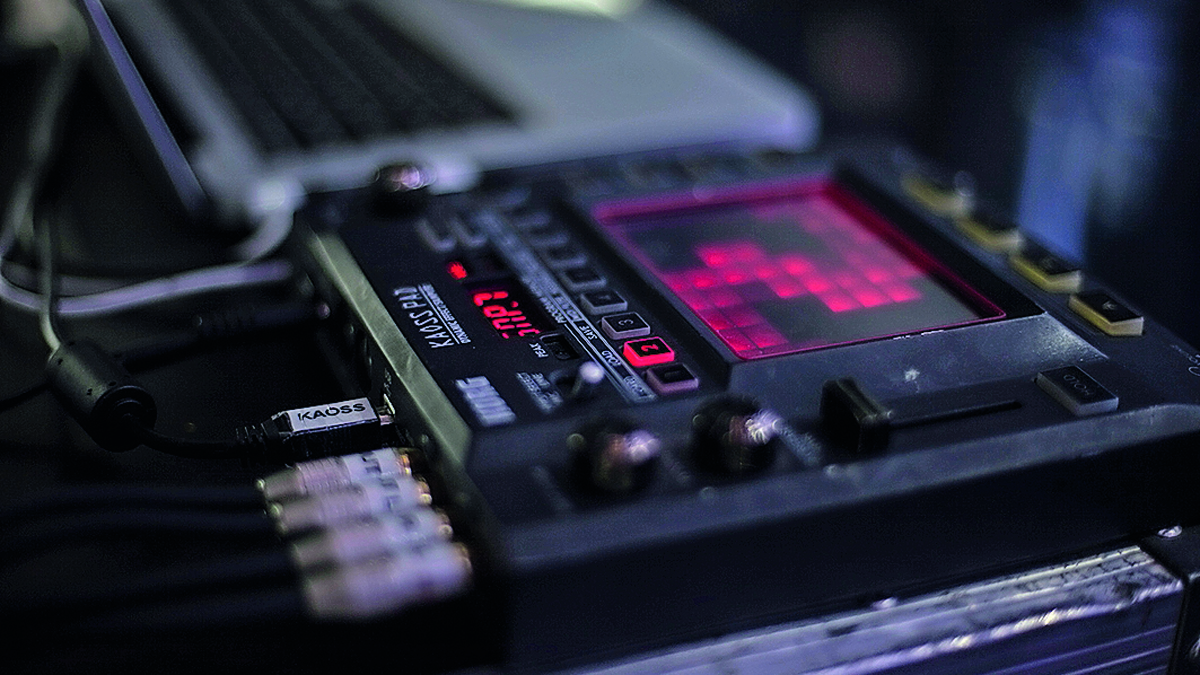
No room for Roland
What software do you have on the laptop?
“Live I’m using Ableton basically just as a sample player rather than running everything from it. Adam’s got his laptop running in sync so he can apply effects in time with the track. I use a vocoder on some of the tracks too – our really beautiful old Roland VP-330 vocoder is too valuable to bring out with us so we’ve found a really brilliant software one, which is perfect as it doesn’t feedback.
“The Roland one is masterful; it’s a stunning machine. We used to bring it out but you have to keep it in tune and it would feedback. It would take up three- quarters of the soundchecks!”
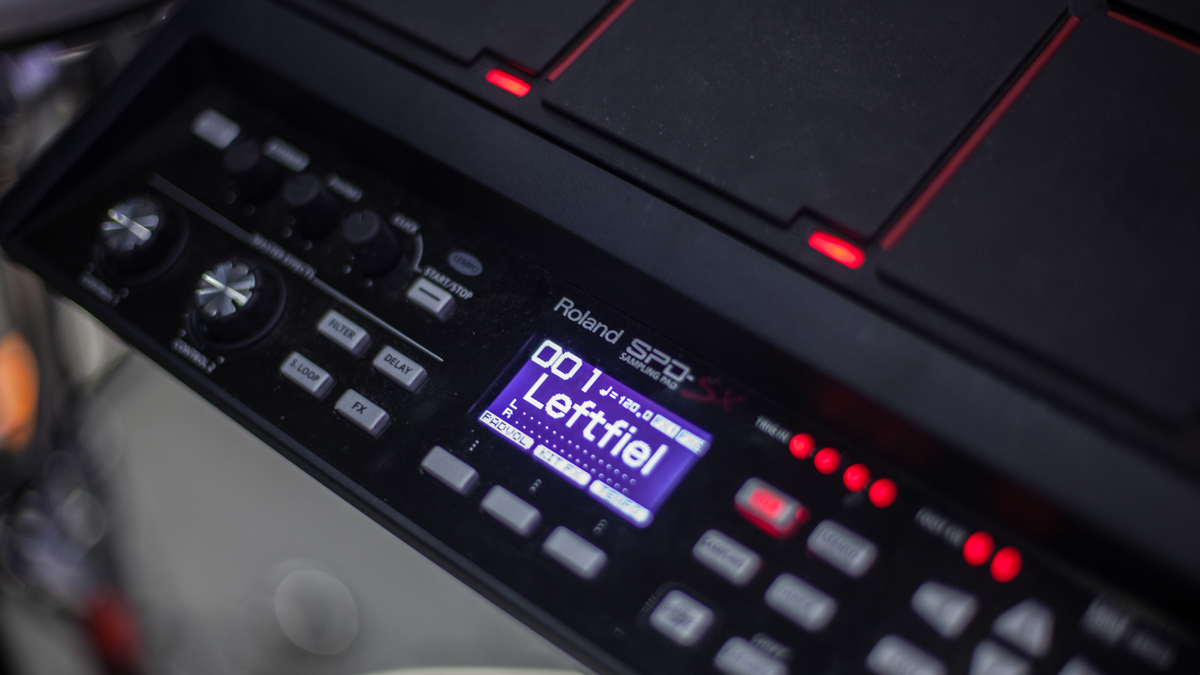
Guest vocals
You have the guest vocalists to factor into the equation too, don’t you?
“Yeah, we have Cheshire Cat and Ofei doing vocals on two of the tracks. Jason (Williamson of the brilliant Sleaford Mods) can’t be here tonight, unfortunately, or we’d be doing Head And Shoulders too.”
Anyone on your vocalist wish-list?
“It’s difficult to single anyone out as it’s not until you start working on a track that you tend to think of someone. Lana Del Rey is someone I could work with. That’s the type of place I’d go in terms of doing something with an established artist; doing something really dubby with her. She’s fantastic.”
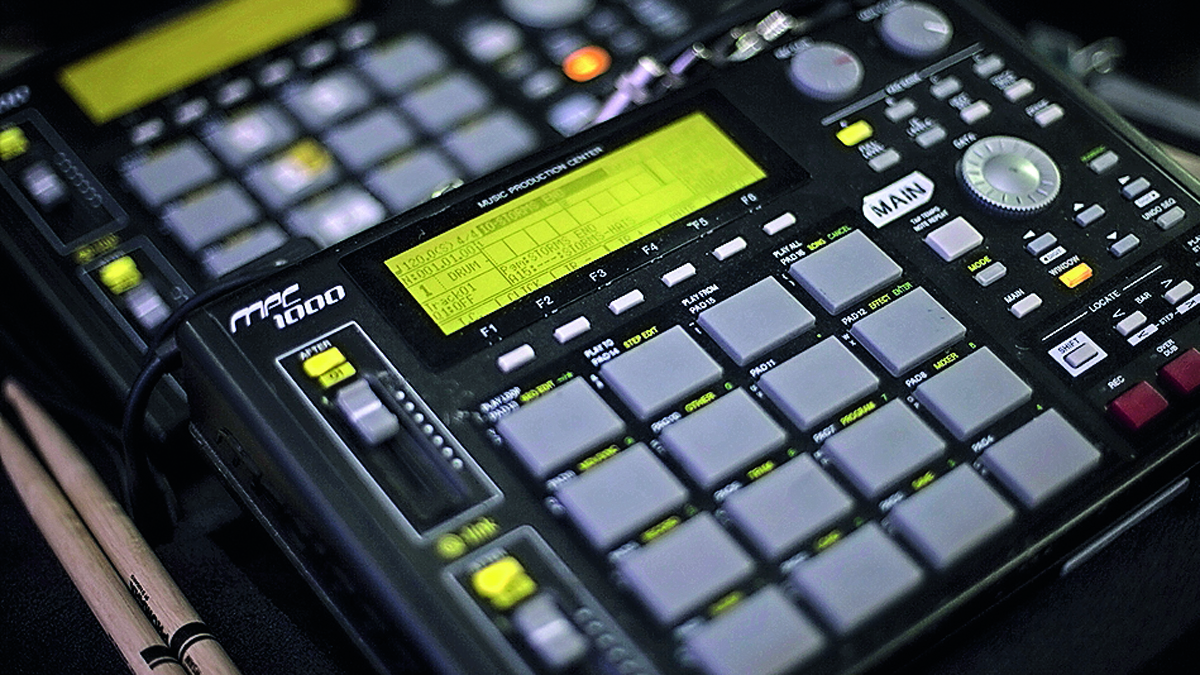
Sample culture
Is your live set-up the result of your growing up with the culture of samplers over the years?
“It’s done this way because we always did it this way. Paul [Daley] and I used to play it as a live band, which is ridiculous really as it’s computer-generated music so it’s tricky to do live!
“A lot of people just play things back and manipulate the sound, which is a part of what we do but we’d have to do a hell of a lot of rehearsing to play this set as a totally live band with Nick – the speed of some of the tracks is too hard to play live and nobody wants to stand there and play a two-fingered bassline for eight minutes! So, I suppose elements of the set have to be sequenced; it’s not Rock music.”
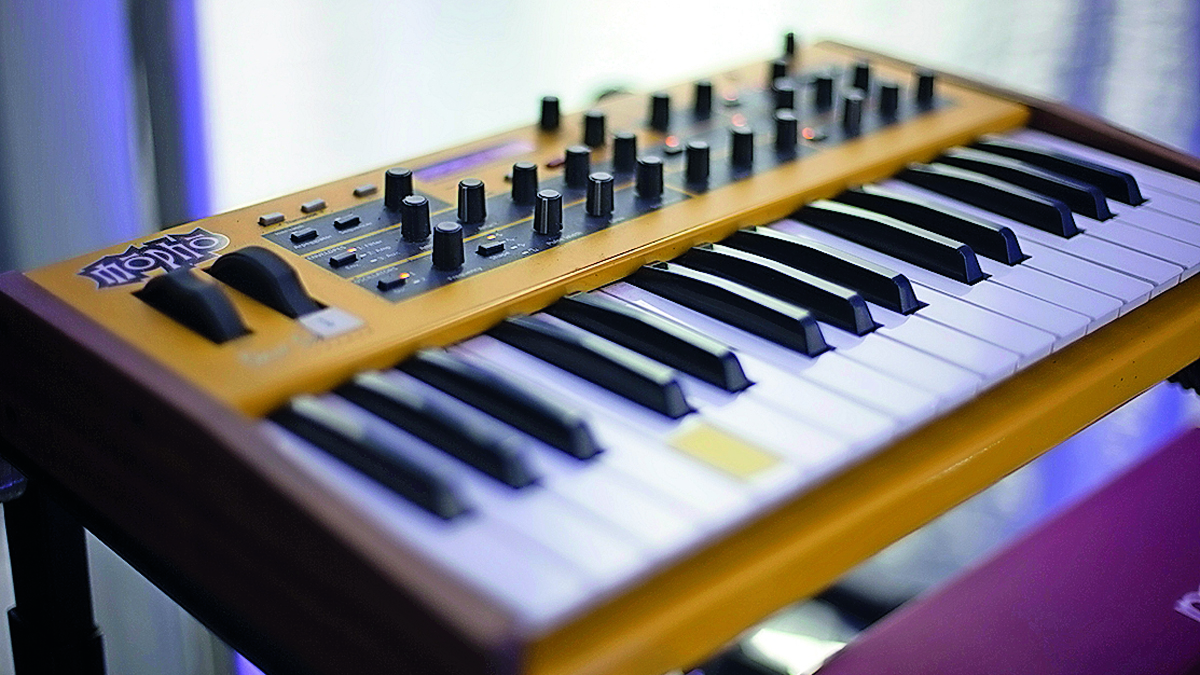
Tricky tracks
Which of the tracks from the new album are the most complicated to play out live?
“[laughs] They’re all complicated! If I think about it probably the most complicated is Shaker Obsession as there’s an awful lot going on with it. Bad Radio is a bit tricky too; I mean, they’ve all got different issues with different elements. We go from one track to another and we’ve all got our cues for what we’re doing, which sometimes we make and sometimes we don’t. Every gig is different.”
Does working that way keep it fresh?
“Yeah... fresh within a framework though, as we can’t just suddenly go, ‘let’s do this track’. That’s impossible as all the lights and visuals are sync’d up to what we’re doing. It’s not a radical approach as that’s how most people work with these big shows. We can play without the screens and play as a band though – we did it at the Green Man Festival and it went off.
“The screen is just a different way of approaching the way things looked this time. I wanted it to look like it was in its own little world so the screens have all the visuals on them and we’re behind the screens.”
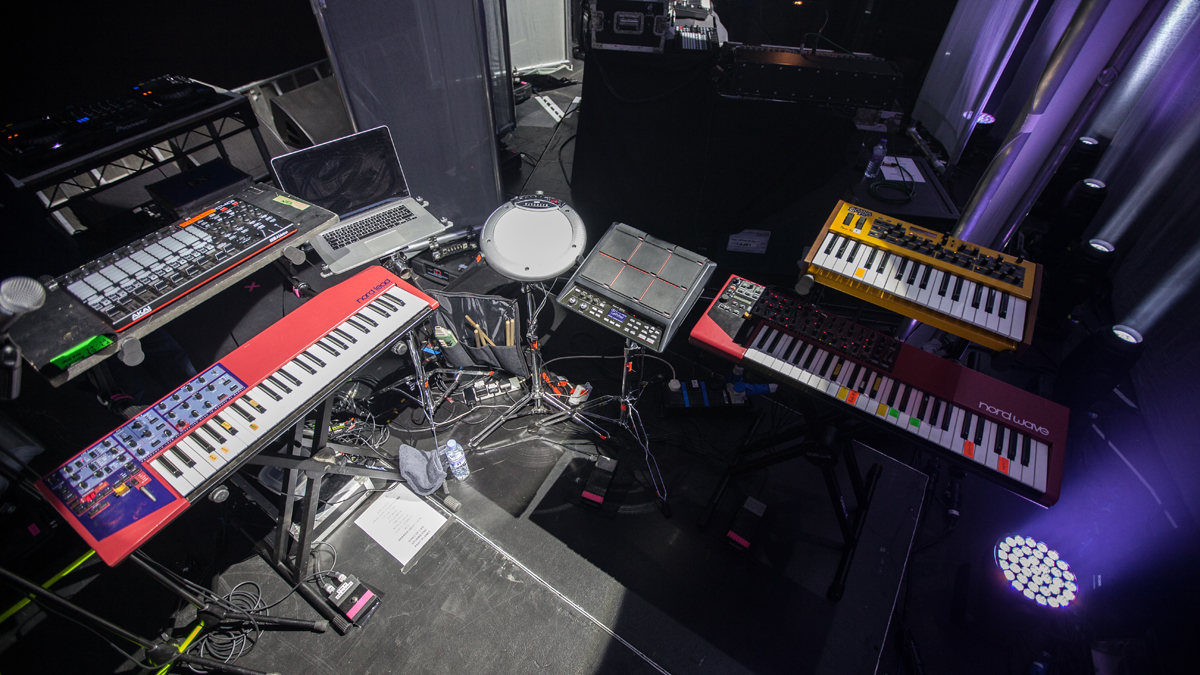
Bass and vocals
If we had to sum up Leftfield to someone who didn’t know your music I think we’d use the words ‘bass’ and ‘vocals’ as you’ve had a keen ear for both over the years. Would you say that’s fair?
“Yeah, kind of, as it’s still dance music. Maybe this new album is a little less bass as I made a deliberate attempt to steer away from skanky reggae rhythms, although Jason’s track, Head And Shoulders, leans that way. The bass and the drums are still the essential element. It’s built for the dancefloor or a more clubby environment, anyway so it’s got that kind of sound to it.”
Is that a conscious decision as you’re putting new tracks together?
“Again, there isn’t a particular formula. The best tracks are the ones that have a concept that you work towards. Sometimes things that start as a jam, which some of the tracks can do and a couple of them did – they take a bit more work as you get to a stage with them where you think, ‘where’s this going now?’. Whereas some tracks have a bit more structure to them, such as Bilocation, which was a demo I did all on a DSI Tempest. I use them a lot for writing with. Also, Ofei’s track, Levitate for You – that was a demo too.
“Bad Radio was sort of a jam that we sent the backing track to Tunde (Adebimpe of TV On The Radio) and he added something on so we had to change our one and so on. So there isn’t one formula.”
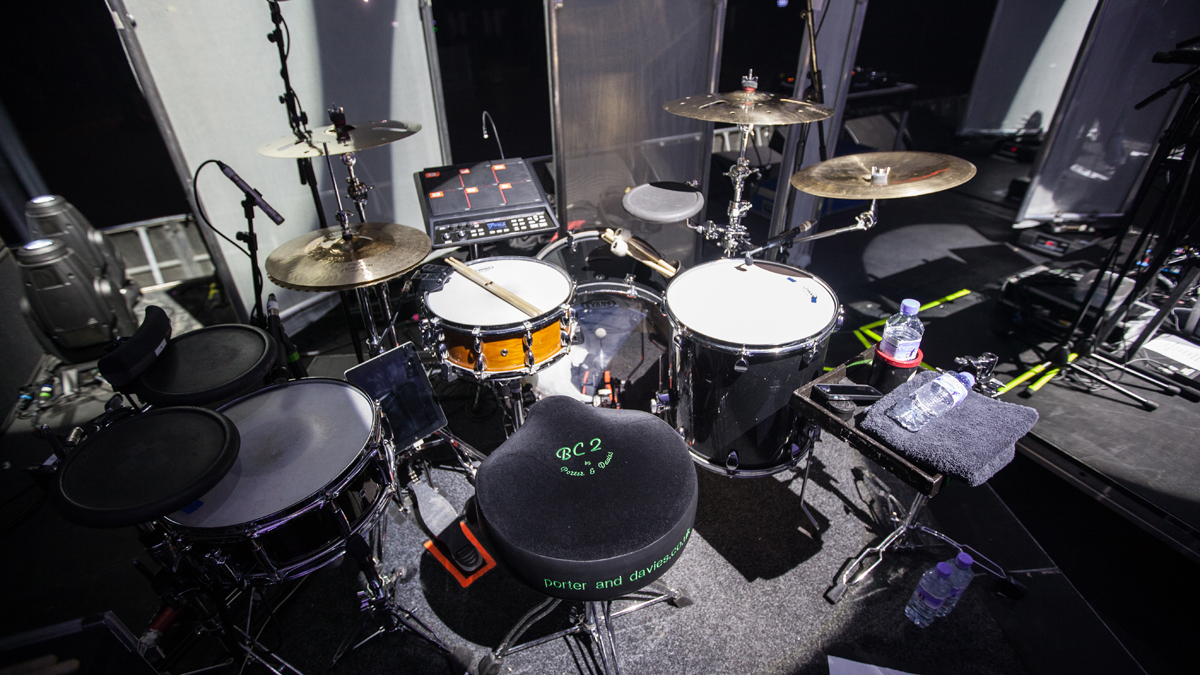
Knowing when to stop
With all the limitless electronic avenues to explore nowadays, are you one of those people who knows when a track is finished?
“I think we are, actually. This record took roughly three years to make. The first year was largely experimenting as, being away from making that type of music for a long time meant having to bed myself into that world.
“I started DJing again and that also helped the development too. I needed to do that to achieve the clubbiness of it, which is what Leftfield has. Universal Everything was a total club track inspired by DJing out and the current 120(ish) bpm scene, Daniel Avery and that world.”
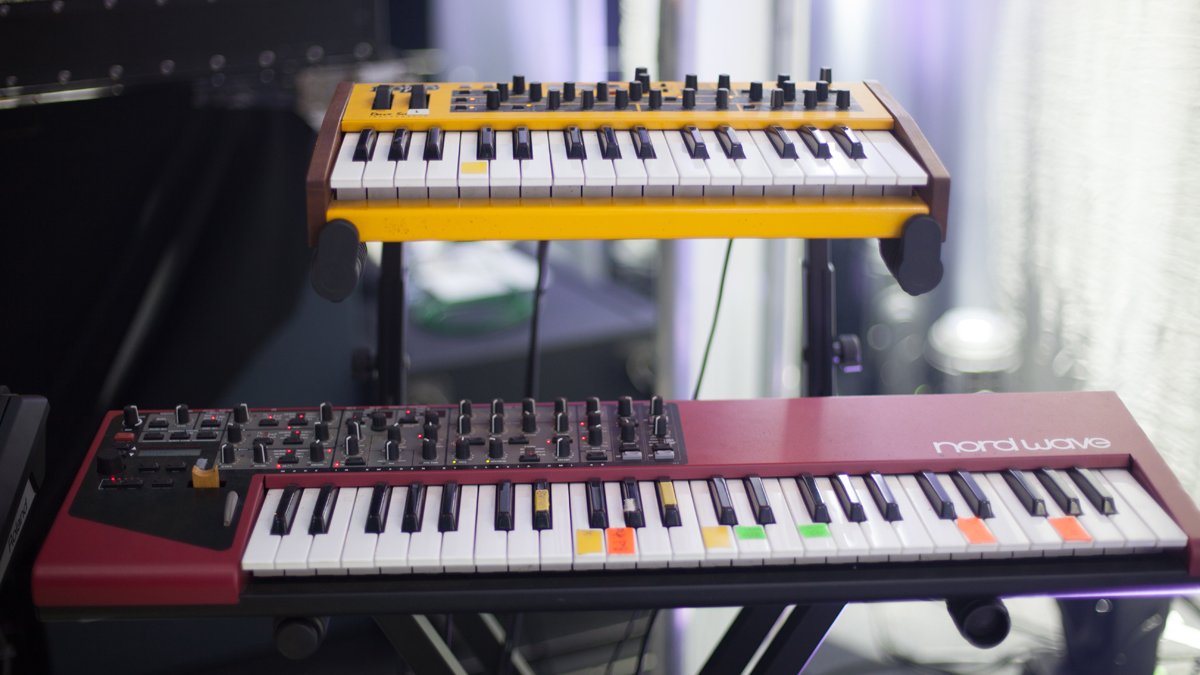
Multi-DAW
Has the Leftfield studio modus operandi changed much since the Leftism days?
“You mean the processes? In the old days we just used loads of different Akai samplers... 3200s, 1100s and 950s; I liked all that gear. We’d only ever have a few tracks of audio as it was all coming off the samplers. We even got as far as recording vocals into the samplers.
“Open Up was probably recorded onto tape or one track of audio but we then put it into samplers, chopped it up and played it off MIDI. That helped get it in sync and in tune with the backing track. John sung it all in one go but we then chopped it up into sections.
“You’ve got so much more available at your fingertips these days though; we don’t even need a mixing desk anymore. You can get incredible warmth off some new soundcards. The processing has become so incredible; those days of people saying that digital is rubbish are gone as digital is amazing now. The good stuff is expensive but the quality is there. A lot of this new album was done in the computer.”
Is it Pro Tools you run in the studio?
“No we use Logic. Some of the tracks were started on Ableton as I got into that a fair bit but Logic has always been the main platform. We find it more familiar for mixing; Adz prefers to mix on Logic, although a couple of the tracks were eventually done on Live, so it’s a bit of both, really. Writing on Ableton is good fun; it’s great for doing loops and getting drums going then sticking them into Logic.”
Do you use many of Logic or Live’s bundled soft synths?
“We did use some... there are drum machines we used, which I can’t remember the name of. Mainly we used the bundled stuff for sampling and making keyboard sounds to use with the real keyboard stuff. So, the answer is, yes, we do use soft synths but not many.”
So, you’re still a fan of programming on hardware drum machines?
“I like making a palette of drums from all different sources, I’d say. There isn’t one thing... there are bits of Tempest in there, some 909s, 808s. I’ve got one of the Korg Volca Bass units that we used for programming some of the basslines. The Acid line in Shaker Obsession comes from that – sync’d it up in Live and just did it on my headphones, actually.”
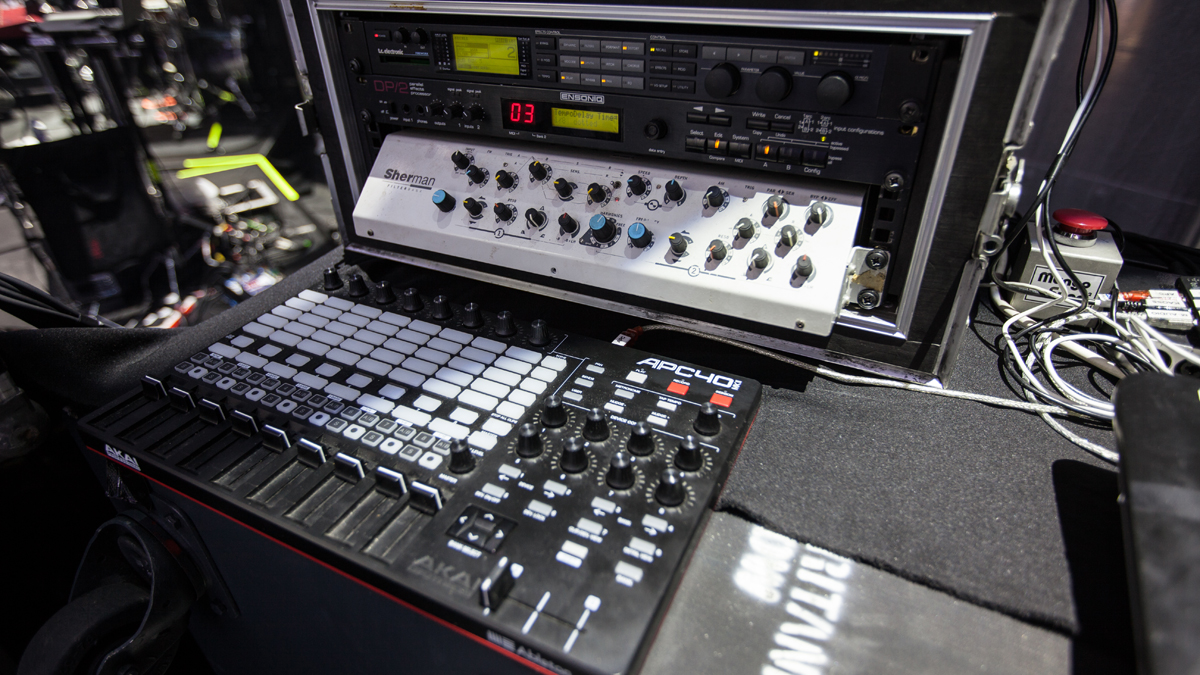
Idle hands
Adam Wren has been part of the Leftfield inner circle since the Leftism album in 1995. Wren’s engineering and programming skills have been integral to Alternative Light Source and his live set-up has the onerous task of keeping everyone else in sync. We endeavoured to find out more.
Neil described your live set-up as being “the most complicated out of all of us”. Could you maybe talk us through it?
“I’m a studio bod so I do kind of take the studio out with me. So, I’ve got a Midas Venice analogue mixing desk with a bunch of sources – drum machines, iPads, laptop, and then I’ve got elements from Nick’s drums as a line, then Neil comes in as well. I have everything coming in as a split so it’s not just only going to me. That way I can put effects on stuff or just use it as a bit of ammo. I’ve got delays, the Sherman Filterbank, TC FireworX, an Ensoniq DP/2, which I use for delays. I have the bpm set for each song then I just faff around with the delay settings.”
So, Neil wasn’t kidding about how busy you are then?
“[laughs] Yeah, it’s the roadie’s nightmare, I think!”
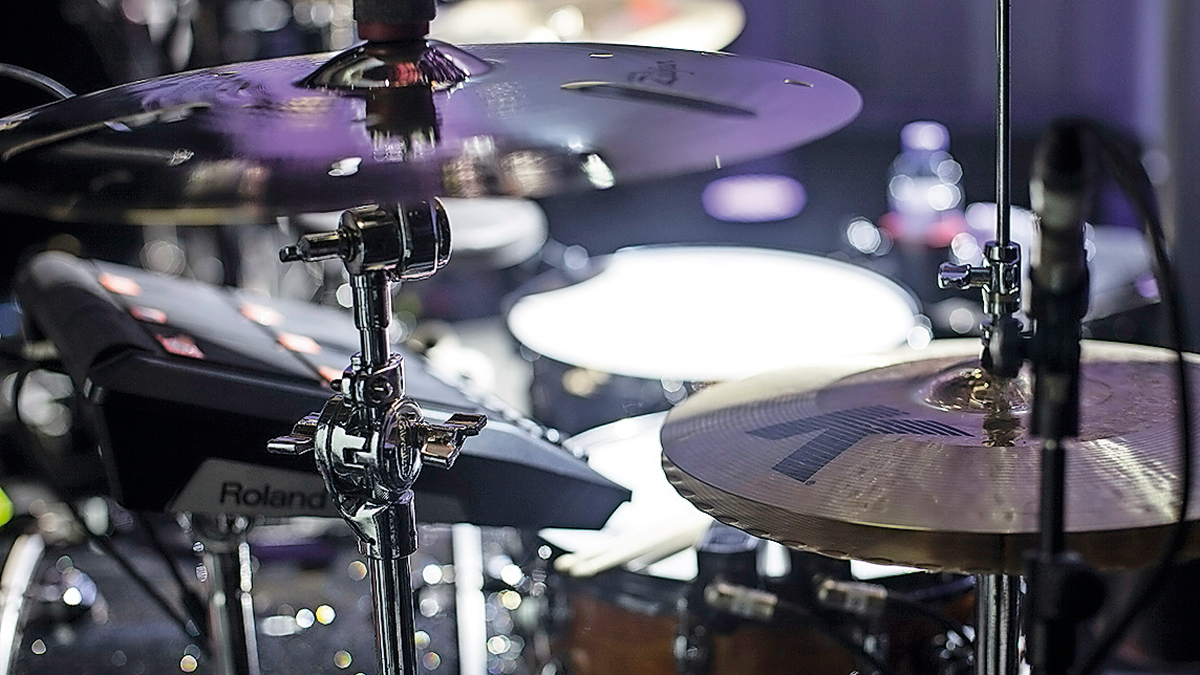
Moving with the times
It’s interesting that you still take a desk out with you...
“It’s much better for me for what I’m doing. It sounds okay and brings its own thing to the party. I use the Midas a little bit in the studio too as a sort of over-important volume knob! It’s sad that desks have become like that but with plug-ins getting better and things like (Acustica-Audio) Nebula doing quite nice analogue stuff, then it does make a lot more sense.”
You’ve been working with Leftfield since the Leftism days and you must’ve seen a lot of changes in the studio process?
“It was all samplers back then, S900s and S1000s in the early days. Saving all the samples onto floppy disks every night... awful! Zip drives saved my life when they first came in. What a beautiful thing they were. You could press the button and save the whole project.”
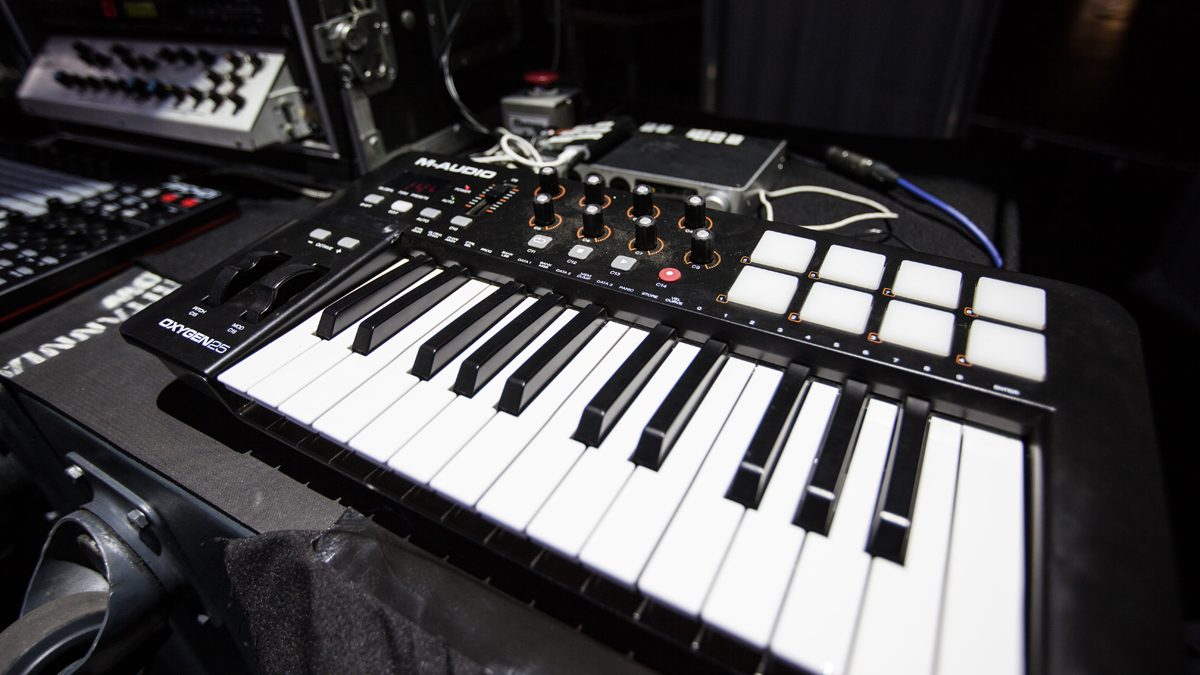
Big red button
We have to ask about that big red button in your set-up that reminds us of the button Father Dougal is told not to press in a Father Ted episode??
“[laughs] It’s made by an Australian company called Mungo Sync (http://mungo.com.au/syncZ.html). There’s a bit of MIDI clock coming from playback and I like to sync my shit up with that, basically. Now, when your slave program dies or you need to restart it or whatever, you can’t re-sync so hitting the red button stops it. So, you take sync from the master machine, stick it into the red knob and it then spits out new code and, if you hit the red button, it’ll stop the sync coming through. When you hit it again then it restarts on the next bar that it receives... the next downbeat it receives. It’ll send the ‘go’ signal as well, which means you can start up the reloaded software that decided to give up.
“Before every song where I do something that’s sync-specific I find myself in the Audio/MIDI settings page in Ableton re-setting. I do that four or five times every show. I have to re-sync when it doesn’t line up.”
Do you find Ableton the best tool for the job?
“Definitely for me, yeah, because it syncs well and behaves well under fire. That said, I do occasionally have to do a restart. The syncing thing is the biggest issue and we found Ableton could do it and Logic couldn’t when it came to it, which is a shame. It is called Live for a reason, really.”

Making the grade
How did you decide what made it into your live rig?
“For me, it just kind of grows in rehearsals then I try and work out how much of it I can take out with me. I’ve been carrying some of it around since the first tour... same Sherman Filterbank and we’ve added other stuff as we’ve gone along.
“The Korg Kaoss Pad 3 is great – I love that. Again, that’s another thing that works in sync. I sync that via USB from the laptop so I’ve got sync coming in from the playback through the Mungo Sync to sync my laptop up. My laptop then spits out a bunch of MIDI clock again to things like the Ensoniq DP/2, the Kaoss Pad and a couple of other things.”
Having been around from the earliest days, how has your role in Leftfield evolved?
“Well I started out making cups of tea! I was teaboy in the Open Up days so I used to go and get John Lydon his curry and mad stuff like that. I started engineering on that album and a bit of programming. Because you’re all in the studio you all just muck in, really. The job is to get something finished so that everyone’s happy, so whatever it takes... whether that’s programming or making tea!”

Interfaces
What about soundcards in the studio?
“We use a Prism Sound Orpheus, which is a beautiful card, there’s nothing quite like it. Live, I use the iConnect4+. You can plug in your laptop and your iPad and they both use the same outputs which is just wonderful. And you can pass audio from your laptop to your iPad and back again. All those things are pretty glorious these days. The iPad is a really nice interface at the end of the day... and with things like the Lemur app, which is wonderful. They were made for each other, really.”
Future Music is the number one magazine for today's producers. Packed with technique and technology we'll help you make great new music. All-access artist interviews, in-depth gear reviews, essential production tutorials and much more. Every marvellous monthly edition features reliable reviews of the latest and greatest hardware and software technology and techniques, unparalleled advice, in-depth interviews, sensational free samples and so much more to improve the experience and outcome of your music-making.


